On 9th August 2006, “Fake Steve (Jobs)” started blogging at The Secret Diary of Steve Jobs. The blog featured scathing criticism of Silicon Valley and the tech industry at large, a pinch of political satire, along with many in-jokes and pandering to the zeitgeist. It was, above all else, very funny. A year or so after it began the identity of the ghost writer was revealed as journalist Dan Lyons. The blogging eventually stopped as the (real) Steve Jobs’ health deteriorated, and a single posthumous post appeared the day after his untimely death. I often think about Fake Steve, some of his best lines, some of his funniest observations. It was a different time.
Anyway… imagine my surprise when, earlier this year, I discovered that somebody in Japan had done a “Fake Bill (Gates)” a decade before Fake Steve! Truly, everything is a remix.
Letters from BILL G
ビル・Gからの手紙 “Letters from BILL G” was a column that appeared in EYE・COM magazine in 1996 and continued after the magazine was renamed to 週刊アスキー (Weekly ASCII) in May 1997.
The writer of the column was コモエスタ坂本 (Comoesta Sakamoto). Of course, his name is a pseudonym combining Spanish and Japanese. He was a philosophy graduate (Sophia University, 1988), performance artist, actor, punk singer with 坂本プロジェクト (Sakamoto Project, 1989), sports commentator, journalist, author, and all-round troublemaker. Quite a busy man! There is next to no information on the internet about all of this: a single blog post, some reminiscing on Twitter and a short bio. So I’ve done my best to dive deep into the Wayback Machine to uncover what I can.
The Letters from BILL G were eventually published in two books, with Volume 1 appearing in August 1998 and Volume 2 in July 1999. After the column had been running for around 6 months, ramping up to the publication of the first book, a teaser/promo website was introduced featuring a selection of letters. This is cool because internet was still pretty new at this point! Both the books and the website feature letters in their “original” English as well as in “translated” Japanese (of course, this is the opposite of the real order of events).
The Media King
BILL G is quite a character. He proclaims himself to be “The Media King” and claims credit for a whole host of aspects of modern technology some of which are true and some of which are, of course, blatant lies.
I would say that BILL G doesn’t call out specific people or turn to (tongue in cheek) personal insults as frequently as Fake Steve did. But BILL G is well remembered for his brutal opening remarks of many letters were he is condescending to Japanese people in general, explaining how he is better than them. And in some letters he response to “reader’s questions” which are equally scathing.
Of course, in the mid- to late-90s Windows reigned supreme so the butt of the jokes tend to rest on Microsofts dominance in the marketplace and what seemed to be its inevitable encroachment on every facet of computer use. In letter 61, published in 1997, BILL G declares that he “invented the Internet”. A decade later Fake Steve would declare “I invented the iPhone!”
Topics include: Pocket PCs, Y2K, Tamagotchi, IE in Windows antitrust suit, Clinton/Lewinsky scandal, iMac introduction, sports events such as The Masters, and so on. Many topics that were mentioned are still relevant today: Digital currency, Network OS, Pokemon, Global warming, and more.
I recommend browsing the teaser/promo website in English or Japanese, but here are a few of my favourites:
- the “true” story of Windows GUI vs Mac GUI
- cloning himself into every PC “BILL G Inside”
- Bing Crosby singing “White Christmas” at the Christmas Party (“he’s dead? no problem we’ll use a hologram”)
- comparing a short trip around Japan to “Gulliver’s Travels”
- his disclosure that micro drives came out of what “really” happened at Roswell, NM
- his brief obsession with the game “Age of Empires”
- a brief stint as “Counsellor for Love Affairs”
- a virtual interview with Ghandi that ends in a fist fight
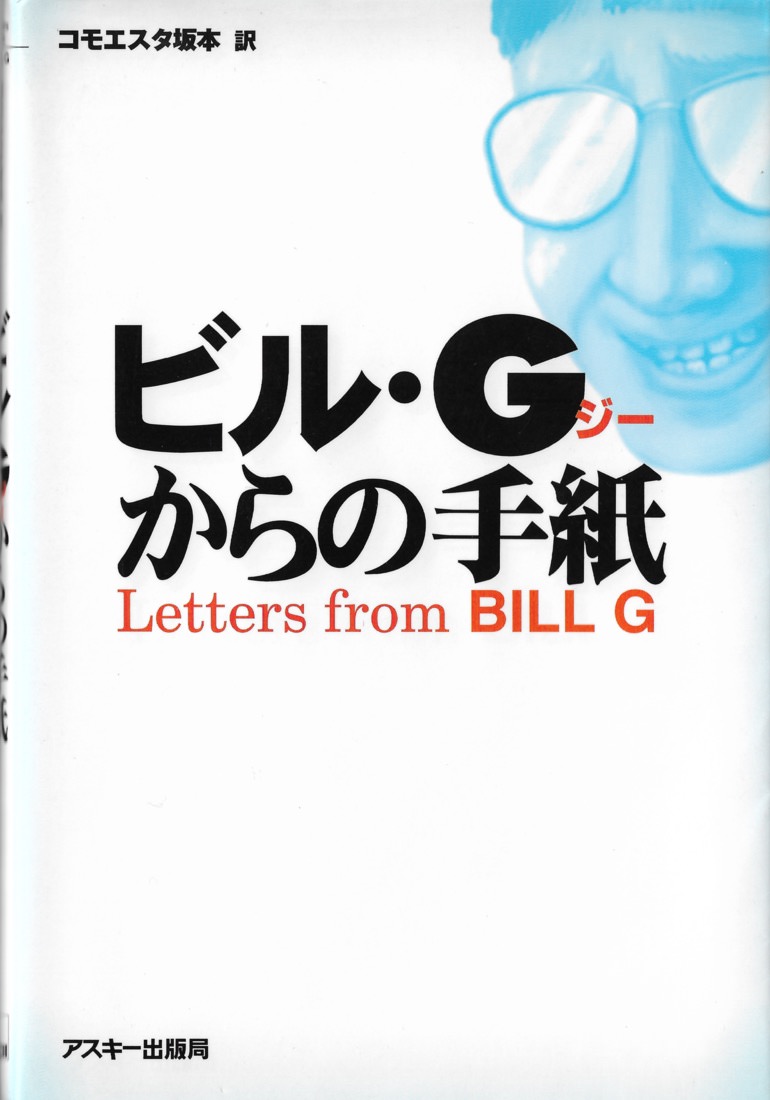
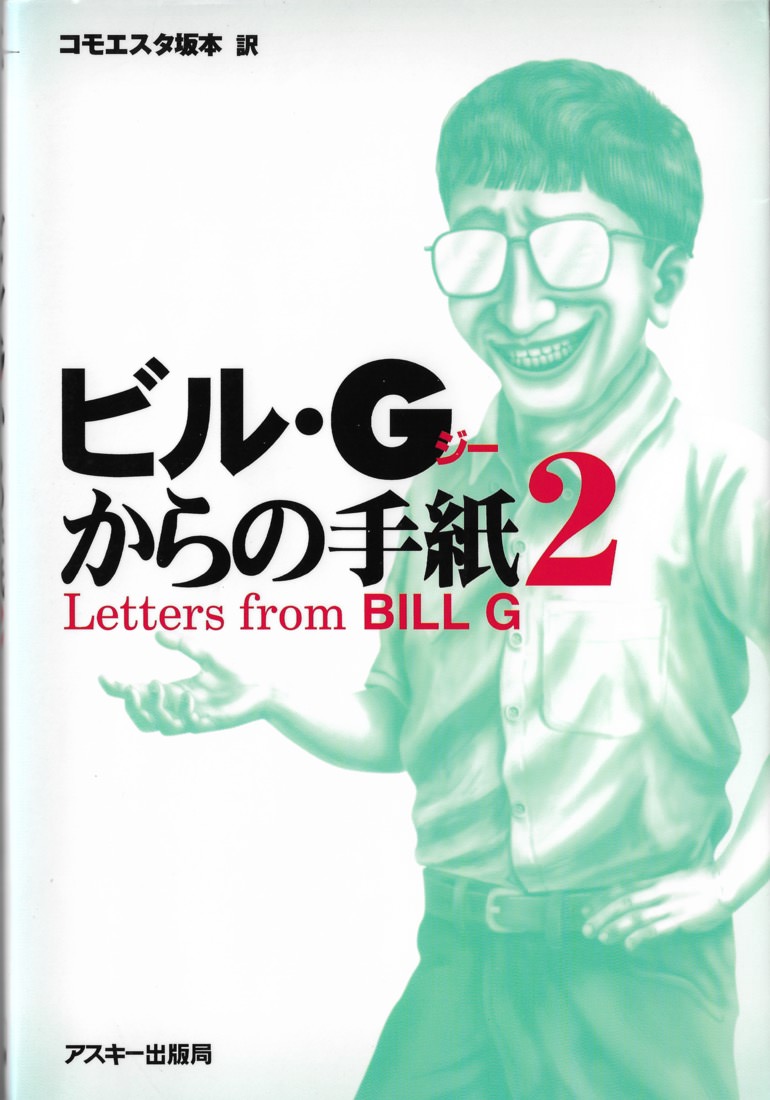
End Users
It feels to me that the BILL G column may have fallen out of Comoesta Sakamoto’s digital magazine 末期ユーザー “End Users” (phrased to mean “terminally ill”) that was similarly irreverent.
“End Users” was distributed Mac User’s MACBIN CD-ROMs (supposedly issues 20 to 26, but I can only find it on two of these). On the same discs were some Macintosh apps created by Comoesta Sakamoto, a mix of joke apps (one resets your Mac!), surreal point and click explorations of sound and image, and a text-mode baseball game (seemingly a version of an earlier game he’d made for Japanese NEC PCs). You can also find these on an archived version of his old website via Wayback Machine.
Legacy
BILL G is a product of its time, and neither it nor Fake Steve have the impact today that they had when they were published. But they’re both still pretty funny and seemingly fondly remembered around the world.
The BILL G column was well-remembered enough that it reappeared in MSX Magazine 永久保存版 2 (MSX Magazine Eternal Preservation Edition 2), released in December 2003, and available to read at Internet Archive.
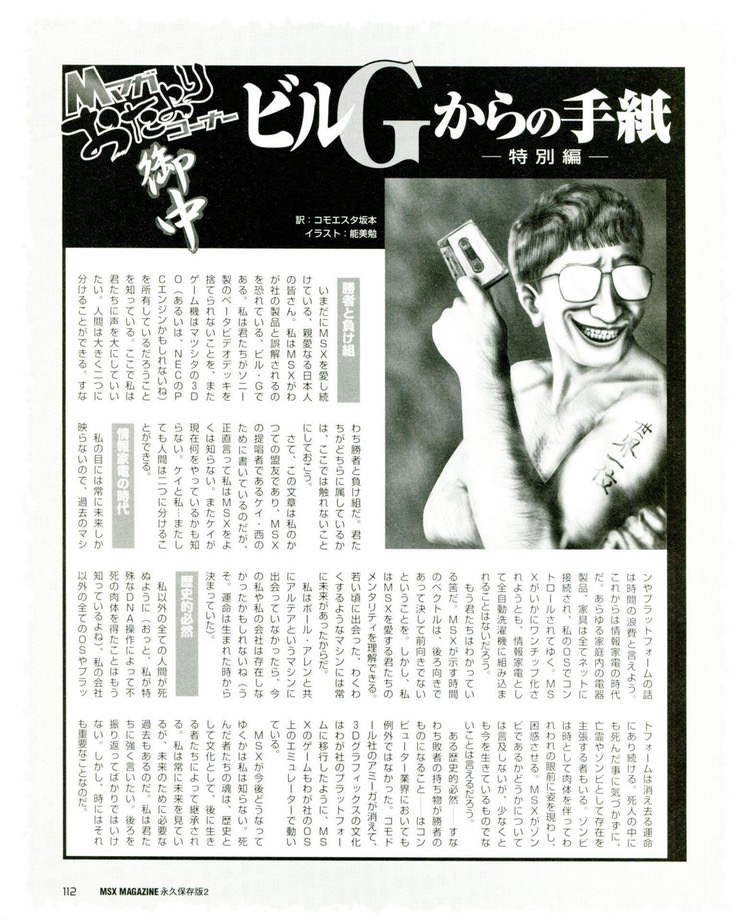
SameGame
It seems that at some point Comoesta Sakamoto was swept up in the SameGame craze that happened in Japan during the mid-1990s. He wrote a strategy guide about how to play it, and published it in two minor variations: まきがめ必勝ガイド (MaciGame Victory Guide, for Macintosh) and さめがめ必勝ガイド (SameGame Victory Guide, for Windows/DOS).
さめがめ (SameGame) by Eiji “Kyoto” Fukumoto, is a variation of the original game in the genre: Chain Shot by Kuniaki “Morisuke” Moribe (1985, same year as Tetris which would remain behind the iron curtain until 1987).
まきがめ (MaciGame) was an expanded version for classic Macintosh that featured a GUI and customisable graphics. Between them the two games created a phenomenon of Tetris-level proportions.
There have been countless versions of the Chain Shot concept made over the years, most based on either SameGame or MaciGame, including one for Super Famicom (SNES) by Hudson which came about in an interesting way.
The goal of this type of game is to clear the board of blocks by clicking on groups of two or more, empty space is then removed vertical by the remaining blocks dropping down and horizontally by empty columns being replaced by their rightmost column. This means that over time blocks converge in the lower left of the play area.
…I’ll leave it as an exercise for the reader to figure out which book cover is PC and which is Mac.
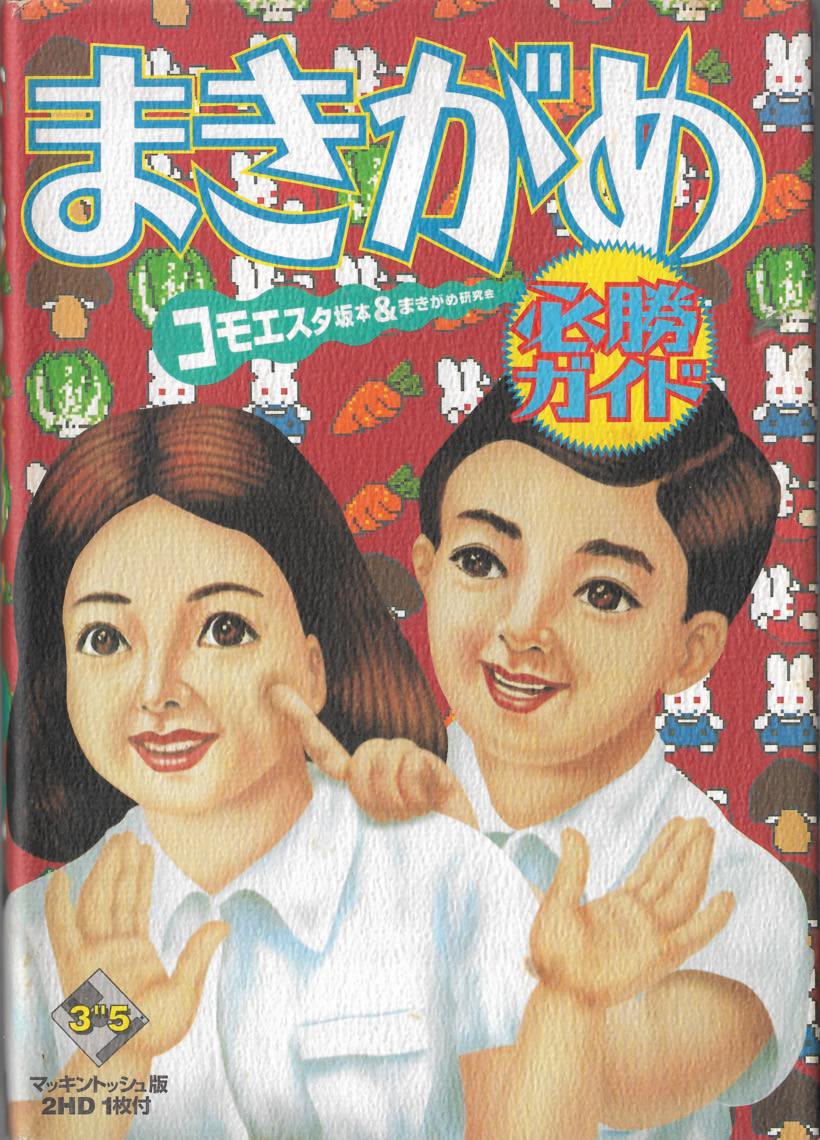
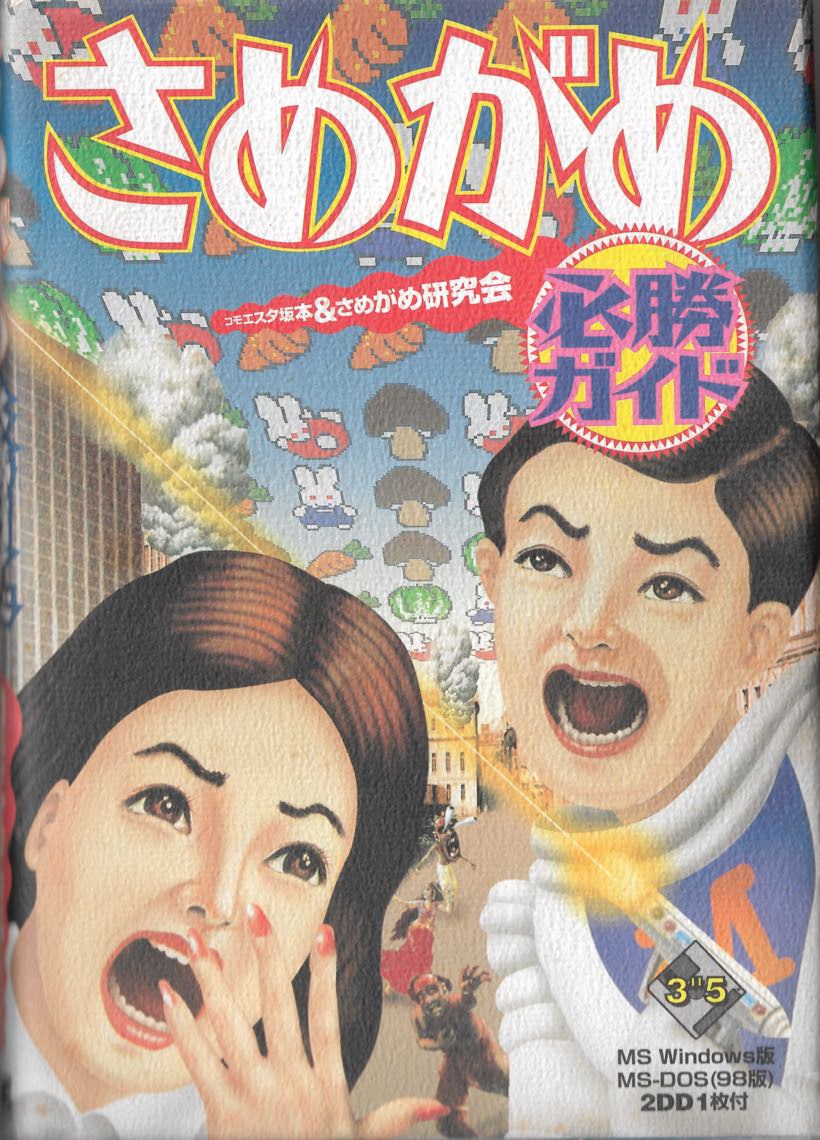
Illustrator
I have to mention the illustrator of all of these books, 能美勉 (Nomi Tsutomu, also known as: nomitsutomuwaku, NohVenWaku, nomitom). His surreal take on mid-century Japanese advertising illustrations used a combination of scans and Photoshop and gave all of Comoesta’s articles and books a very distinctive look.
Again there is very little about Nomi online in 2023, but you can check out a couple of archived websites. Unfortunately his Instagram account @nmt_waku is private.
Fuel my writing habit with a ko.fi donation!
--
Comments: @gingerbeardman